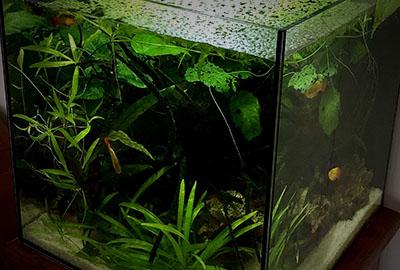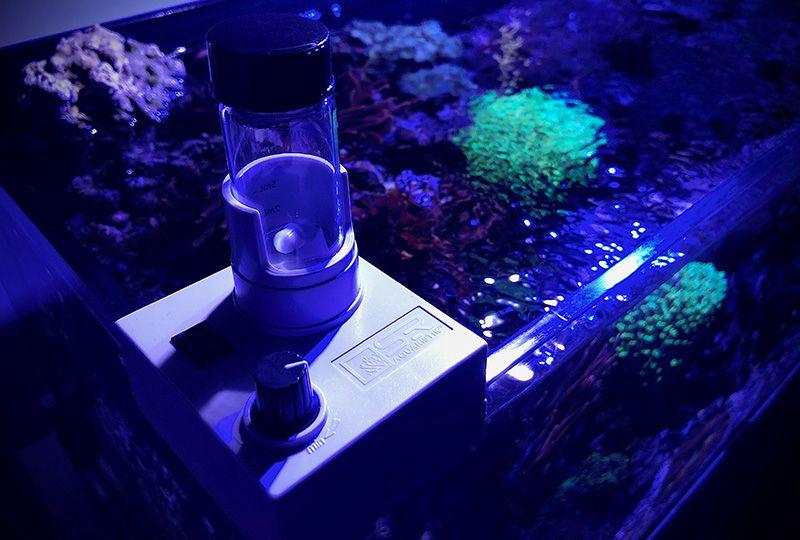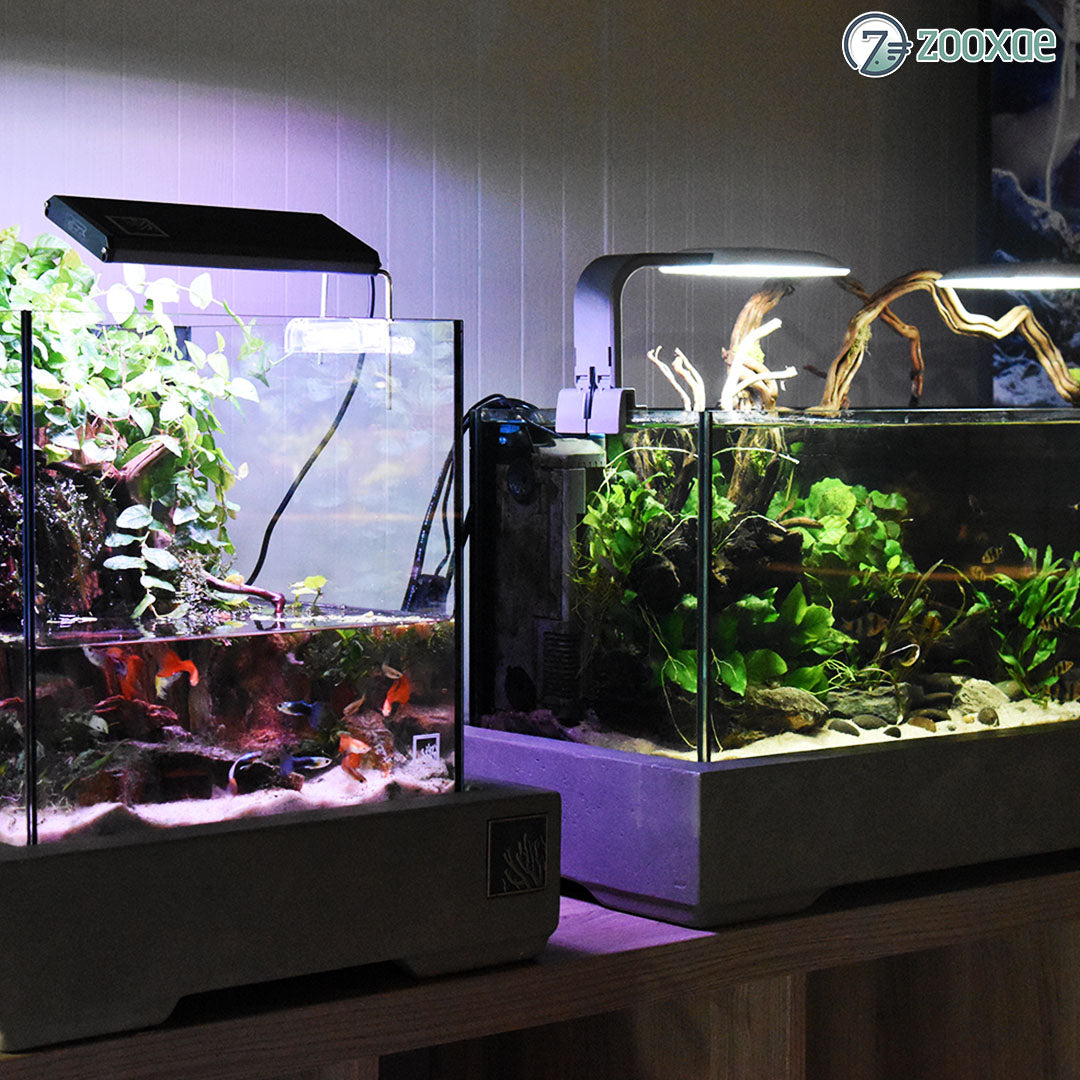Algae growth in an aquarium is something that every fish keeper inevitably faces. Algae growth in aquarium is not necessarily an evil thing. It is completely natural and a sign that your aquarium is healthy, thriving and well-balanced. But if left unchecked, this green menace can grow out of control, covering the glass, gravel and decorations in green or brown residue or film, posing hazards to fish and plants in the aquarium and diminishing its appeal.
Algae can add a “natural” element in your aquarium and serves as a source of food for fish. Your goal, therefore, should not be to completely remove all algae, instead you should focus on managing its growth and maintaining its population to a preferable level.
While trying to get rid of algae, make sure you are treating the problem, not the symptoms. There are natural ways to take care of aquarium algae. Understanding the factors that lead to the growth of algae in freshwater aquariums makes it possible to win the battle. You can then find ways to manage it, and keep the aquarium healthy and well-balanced. Algae thrives on light, nutrients and water; while trying to manage algae in your aquarium, you cannot do away with water (obviously), but there are ways to control the other factors.
- Testing the waters
Testing your tap water is an important first step that is often overlooked. If your tap water contains high levels of nitrate, phosphate or iron it will make it difficult to control algae as you are adding nutrients every time you do a water change. To avoid algae growth in aquarium, it is good practice to test your aquarium water quality regularly.
- Maintaining water quality
Doing partial water changes with nutrient free source water is a good way of diluting excess nutrients. We recommend changing between 10 and 25% weekly for optimum results.
- Keep an eye the temperature
It is important to maintain a consistent water temperature, warmer temperatures above 78°F can help contribute to algae problems.
If algae starts to grow on the glass or other services, it's best to remove them and give them a good scrub. Manually cleaning services of excess algae should be done as often as possible. Removing excess algae not only makes your aquarium look better it removes excess nutrient contained within the algae itself.
- Let there be light -OR NOT
Sunlight promotes algae growth, since algae, like plants, create their own food through photosynthesis. It is advisable to keep your aquarium out of direct sunlight. Additionally, decreasing the length of time and the density with which your aquarium is artificially illuminated slows down the speed of algae growth. We recommend up to 10 hours a day for planted aquariums, for fish only aquariums it can be limited to the time when you most view your aquarium
- Do not overfeed the fish
Feeding fish is a hobby of many, but you have got to be careful with that. Feed your fish the right amount of fish food they can consume within a few minutes. Overfeeding is the most common source of phosphate. The uneaten food and fish waste allowed to remain in the aquarium spikes the phosphate levels to unwanted degrees, leading to speedy growth of algae. Any uneaten food must be removed immediately. Commercial phosphate removers or reverse osmosis (RO) units can also be used.
- No overstocking
Algae thrives on overstocking. Do not overstock your aquarium, especially when it already has excess algae. This will also reduce the amount of organic matter in the water. Prevent algae in aquarium with the help of liquid algae controls.
- Algae makes good dinner
Adding algae-eating fish like Bushy-Nosed Plecos, Otocinclus, Siamese Flying Fox, Cory Cat etc. in freshwater aquariums can solve the algae problem. These algae-hungry beings seek out any traces of algae, plant leaves or excess fish food before they can decompose and turn into nitrate and ammonia. You can enjoy these fish as pets while they enjoy algae as food. It’s a win-win scheme!
- Live plants to the rescue
Keeping live plants in the aquarium keeps algae growth in check as they compete with algae for light and many of the nutrients that lead to algae growth. You can even introduce floating plants in your aquarium; they block out bright light by spreading across the water surface and soak up excess nutrients, thereby starving the algae. It’s a decorative remedy!
- The power of filters
Factors like polluted tap water, overfeeding, overstocking, failure to change water routinely, make the water rich in nutrients, phosphate, iron and nitrate, which is all algae need to grow. A high-grade filter can help lower the nutrient content and slow the speed of algae growth down. Carbon filters are effective in maintaining the clarity of water and removing dissolved nutrients, phosphate, and ultimately, the nuisance that is algae. Routine changes of filters are important since over time, they become saturated.
- Preventing new growth
New algae growth in a freshwater aquarium can be prevented with the help of liquid algae controls, like Fritz Algae Cleanout control. Fritz Algae Clean Out is the most concentrated EPA registered algaecide formula available. Algae Clean Out targets string algae, blanket weed and green water caused by single-celled algae. Using liquid controls would be effective only after you have taken care of the root of the algae problem.
If diagnosed at an early stage, most algae issues are manageable. Using a mix of the above methods, you can manage to keep your aquarium clean, healthy and colourful.
Though it looks unpleasant, having some algae is okay. There is no reason to panic unless it starts covering your glass or the plants. The key is to find the right balance in this enclosed ecosystem in your house.




Leave a comment
This site is protected by hCaptcha and the hCaptcha Privacy Policy and Terms of Service apply.